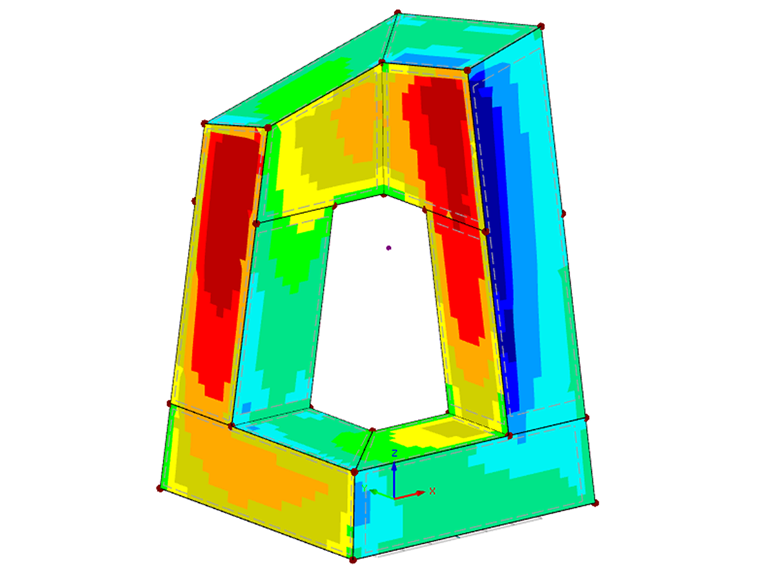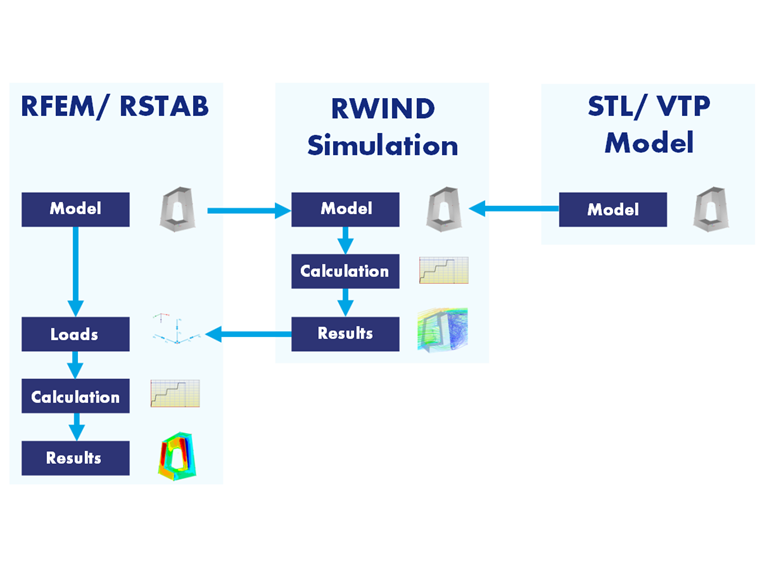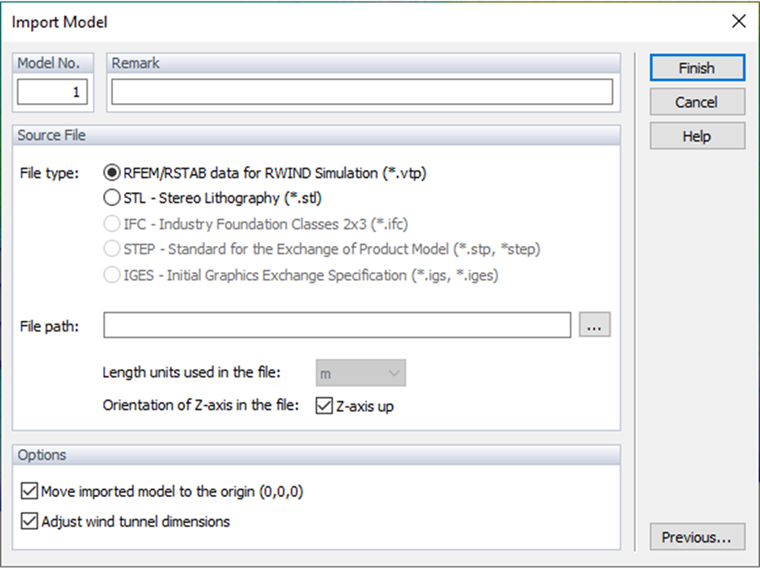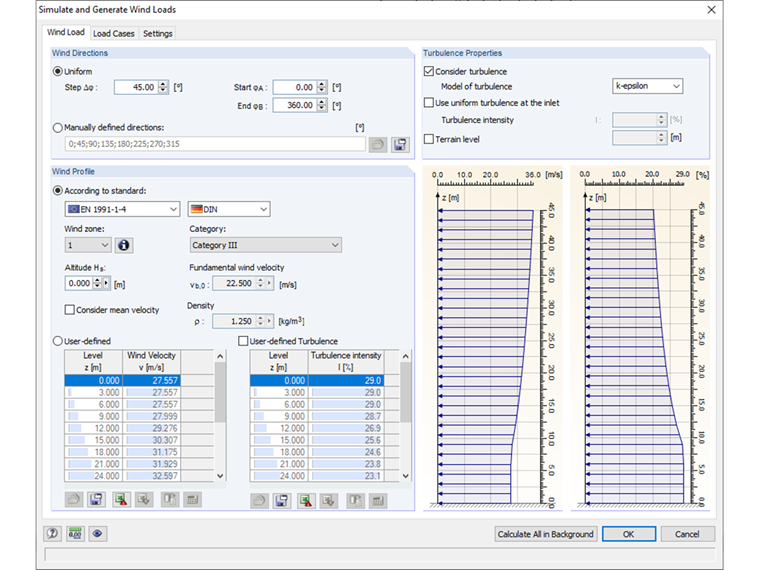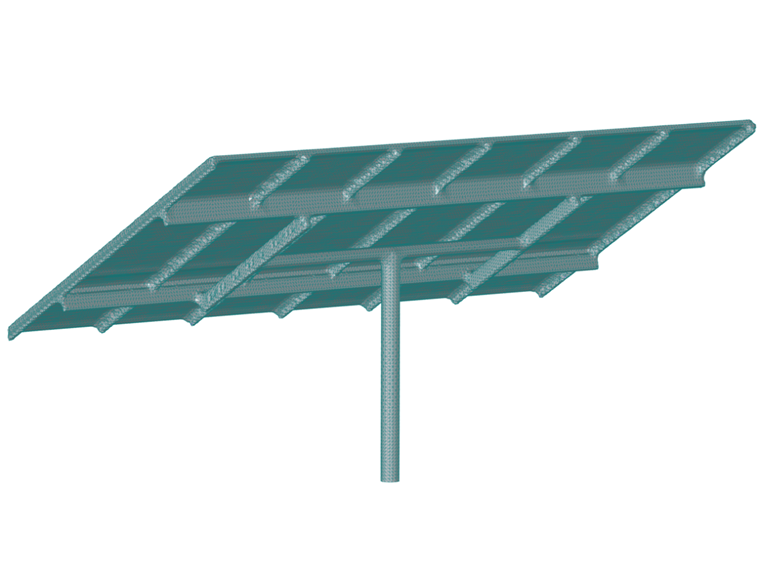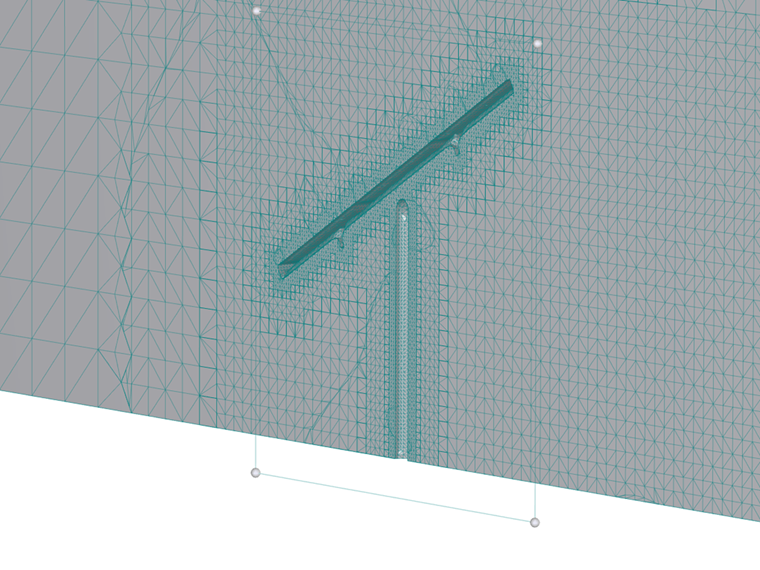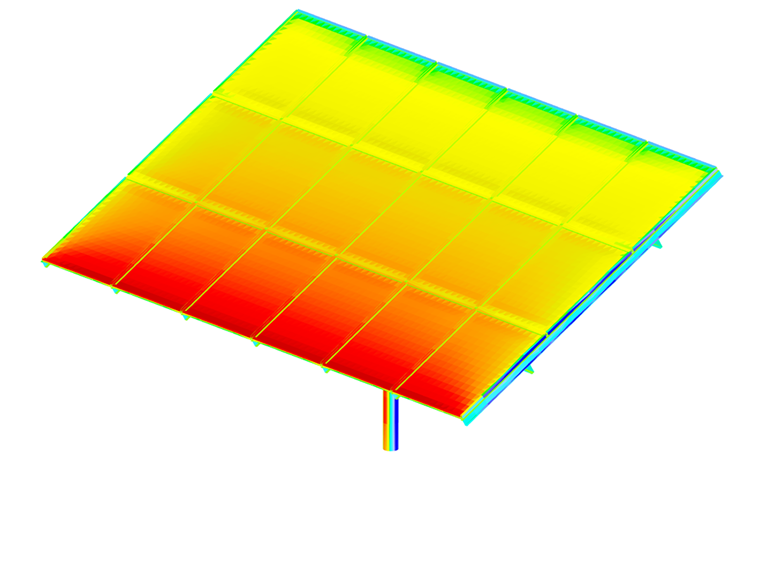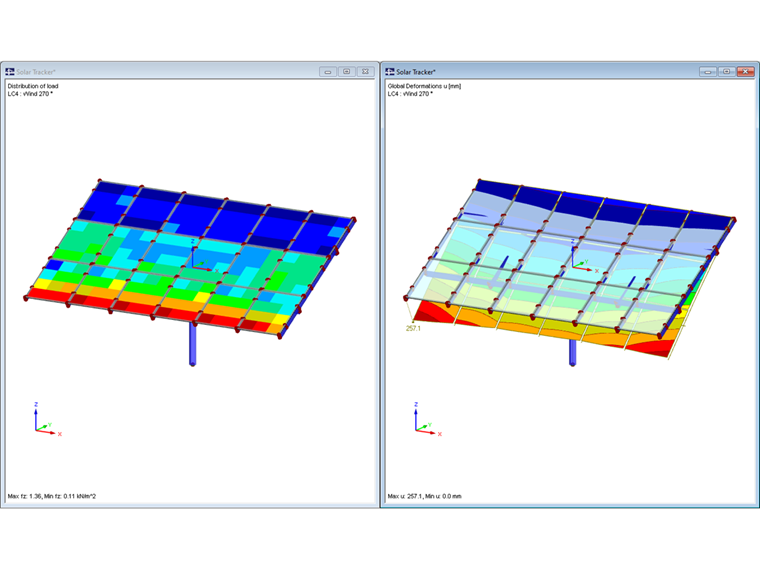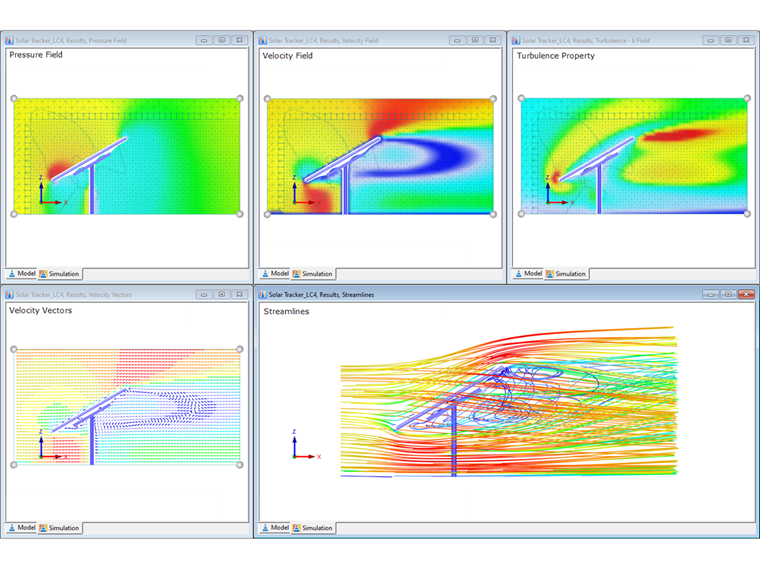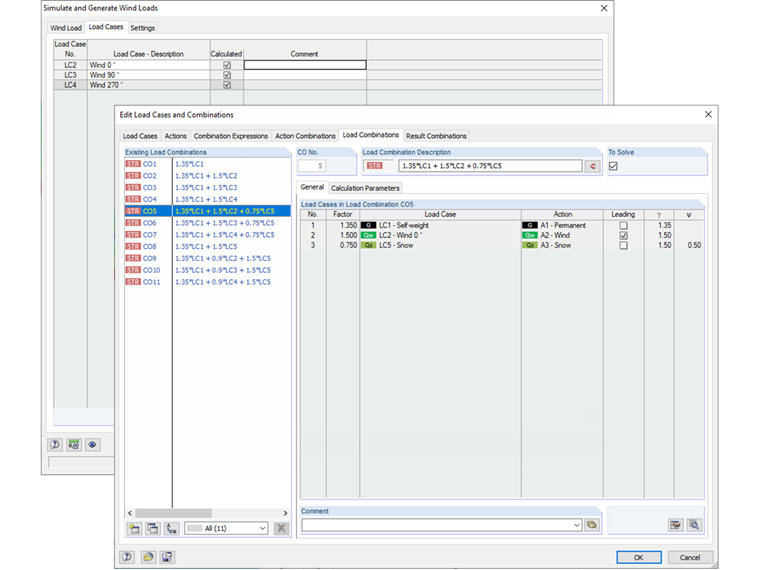You can easily see these changes in the increasingly daring building shapes. It is like a competition to create slenderness in a skyscraper reaching towards the sky, or a complex curve function in the building envelope. However, one of the things all projects have in common is that a structural analysis and design for the safe transfer of all loads must be created before the execution.
This task is a very complex process, depending on the building's geometry and usage. New types of buildings, in particular, have another difficulty in terms of wind loads. Where the wind load for a standardized building shape can be taken from a standard, the wind load remains unknown for the new freeform geometry. To solve this problem, you can analyze the building in a reduced size in a wind tunnel and determine the corresponding wind loads. Alternatively, you can simulate the building in a wind flow using numerical simulation technology and draw conclusions about the equivalent wind load.
Despite the more complex result evaluation, the numerical solution option offers a certain advantage compared to the test-based solution: you do not have to create a reduced building model, and you can still utilize a wind tunnel. This advantage is especially attractive when designing and defining the building shape.
This is exactly where Dlubal Software, in cooperation with PC-Progress and CFD Support, started and developed RWIND Simulation for structural engineers. This program simulates wind flows in a digital wind tunnel around buildings or other objects and generates equivalent loads for structural analysis and design.
RWIND Simulation is specially designed for the wind load determination on buildings and requires only a description of the wind load besides the 3D model. All other parameters for performing the complex flow simulation with regard to the basic assumption are automatically defined by the program. You do not have to carry out the complex definition of the fluid mechanics issue, and you get the analysis of the results immediately.
How RWIND Simulation Works
RWIND Simulation is a stand-alone program and can be used as a stand-alone application or as a complement to RFEM/RSTAB programs for static and dynamic analysis. Due to the basic assumption regarding the determination of wind loads for buildings with the transfer of forces to the structural model, there is a native connection between RFEM/RSTAB and RWIND Simulation. This connection allows exporting any RFEM or RSTAB model with wind load definition to RWIND Simulation utilizing a special interface and receiving wind loads on the surfaces of the elements after the calculation. You can also run the RWIND Simulation program manually without the interface in RFEM and RSTAB.
Modeling
RWIND Simulation is organized in projects. Each project describes the object geometry oriented to the wind flow in a numerical wind tunnel with a defined incoming wind load, including all flow field results in the wind tunnel and surface results on the objects. The incoming wind load describes the wind velocity and turbulence intensity profile over the height at the entrance to the wind tunnel. You have two options to define a project.
- If you want to perform a wind load analysis only in RWIND Simulation, import the geometry surrounded by flows to the numerical wind tunnel of the project utilizing a 3D data model, align it in the wind tunnel, and define the incoming wind load in the dialog box. This program allows you to import the model as triangularized model geometry utilizing the STL format, or as ParaView model geometry utilizing the VTP format.
- For a wind load analysis using the wind loads in the RFEM and RSTAB structural analysis programs, you have to create the primary model as a structural model in RFEM or RSTAB to retain all connections. In this case, you can define the wind load (manually or according to the standard) for different wind directions via an interface application in RFEM and RSTAB, and the structural model with all members, surfaces, solids, and 3D objects for the wind directions is automatically exported to the wind tunnel projects of RWIND Simulation.
When importing the model to RWIND Simulation, no further restrictions will be present. Regardless of whether the object with flow around it represents an organic shape or a sharp-edged block, the available interfaces import the geometry data into the numerical wind tunnel with an orientation option and define appropriate boundary conditions on the surfaces for the numerical flow analysis.
Calculation
RWIND Simulation uses a numerical CFD (Computational Fluid Dynamics) model to perform wind flows around objects using a digital wind tunnel. The simulation process is as follows.
- Generation of a planar enveloping mesh on the surface of the objects surrounded by wind. This enveloping mesh simplifies the geometry of the objects surrounded by wind and ensures the airtightness of all simulated objects.
- Solid element discretization of the space between the outside of the wind tunnel and the mesh envelope with the OpenFOAM mesh generator (SnappyHexMesh). The size of the solid elements is defined fluently and follows a global mesh density specification with a homogeneous compression towards the immediate area of the objects' surfaces.
- Iterative simulation of wind flows in the discretized volume space using the finite volume method with an OpenFOAM equation solver from the SIMPLE solver family (Semi-Implicit Method for Pressure Linked Equations) for stationary incompressible turbulent flows.
- Extraction of the resulting wind pressures from wind flows around objects on the mesh envelope of the objects.
- Transformation of the wind pressures from the mesh envelope back to the original model geometry.
Results
When the convergence criterion of the iterative simulation process is reached, the program displays two basic result types for describing the wind flow around the objects and its effect on the objects. On one hand, the three-dimensional flow fields characterized by layers show, by displaying the
- Wind speeds,
- Wind directions,
- Pressures,
- Turbulence properties, and
- Streamlines (can be animated),
the shape of the wind flow around the object in space.
On the other hand, the scalar surface results show, by displaying the
- Wind pressures, including the output of vectorial wind resistance, and
- Aerodynamic coefficients of the surfaces,
the wind flow effect on the objects.
Transformation
When you use the option of creating the RWIND Simulation project based on entering the model in RFEM or RSTAB, the wind pressure result from RWIND Simulation will be created on the basis of the original model as a separate wind load case in the corresponding RFEM or RSTAB model when the flow analysis is completed. This load case—or a number of load cases, when you analyze several wind directions—include(s) the resulting net wind pressure loads on the FE nodes of the used members, surfaces, and solids. Calculating the RWIND simulation load cases in RFEM or RSTAB results in the internal forces and deformations of the structural elements used, due to the simulated wind flow effects. In addition to the pure calculation of the wind action itself, you can combine these load cases with other actions in load combinations and result combinations, and apply the results in the available design add-on modules.
Conclusion
RWIND Simulation, together with the interface to RFEM and RSTAB, is a very powerful tool when determining wind loads on complex building geometries. With its intuitive programming, you can quickly and easily determine the wind loads for your structural analysis and design, taking into account the utilized calculation theory. This procedure is already common in automotive and aircraft engineering, and still offers high potential in structural analysis and design with regard to a more accurate determination of wind loads and a faster structural analysis and design.
